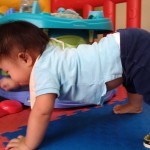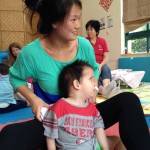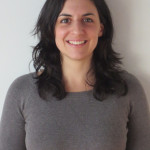In August, several of our speech-language pathologists visited Shanghai Healing Home together. Assisting local Chinese Children’s Welfare Institutes by providing pre and post-surgical care to abandoned Chinese orphan babies born with surgically correctable deformities, Shanghai Healing Home provides a home-like environment that meets not only the babies’ physical needs but also their emotional and developmental needs. In this post, they share their thoughts in their own words on the opportunity to volunteer their time together.
Marifloyd Wright:
“The Healing Home was a great experience for me. I enjoyed playing with the children; they were adorable. It was also a learning experience for me. I was able to see several different children with cleft lips and palates; some have had surgery to repair them and others haven’t yet. I was at the Healing Home during meal time so was able to observe the caregivers feeding the children. I was able to observe and mentally take note of the feeding practices they used. I read a book about feeding over the summer so was able to notice techniques that could be changed; it was a way of mentally applying what I had learned this summer. When we arrived at the orphanage, there were volunteers interacting with the kids. They were singing songs, practicing the alphabet, and making various animals sounds corresponding to targeted animals. It was really fun to see the kids participating and dancing around. While in China, I have heard a lot about orphanages; I am glad I was able to go to one and experience it.”
Holly Chen:
“Shanghai Healing Home was an eye-opening experience! The home exudes comfort and warmth. The children were precious and undeniably curious and social. It was a magical experience to hold, rock, sing, chat, and laugh with the children. I can’t wait to go back!”
Yi Lien:
“I loved this trip to the healing home. I had fun spending time with all of you and the kids! It was my first time holding babies younger than 1-year-old. When the babies were laughing in my arms, I felt that the trip was worth it. Even though it was the first visit to the healing home and I did nothing special but entertained the kids. It was a great experience to play with them, to observe during their feeding time, and to think what I can do more for them. I would love to go there again.”
Angela Gong:
“It was great going to the Shanghai Healing Home with other speech-language pathologists. We observed the children during play time and at lunch. We had a blast playing with them, holding them, and loving on them. It was a great team bonding experience and I look forward to regular team trips to the Healing Home.”






